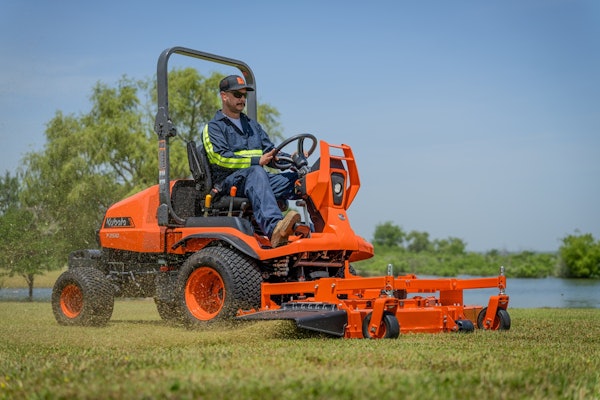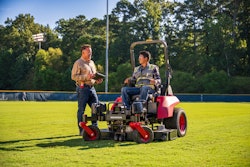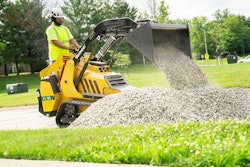Smartphones have become so vital to the workflows of so many landscape contractors and the technology so foundational to the way many people expect things to work nowadays that the devices and the apps they support have changed the way communication and information gathering is done in the industry.
All of that to say, if you’re a landscaper who likes business, you probably need a smartphone. And with all the major phone makers releasing their flagship devices in the past few months, we decided to round up the top five phones for your line of work. Here’s a look at each:
No. 5-BlackBerry Priv
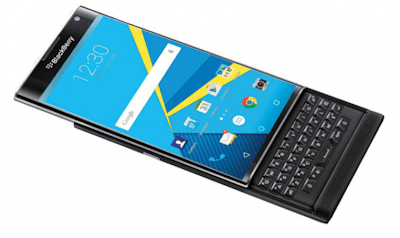
You might be surprised to find a BlackBerry device on this list, but likely not as surprised as we were putting it on here. The truth is, the Priv is the device BlackBerry should have made a few years ago. It’s got a nice, big display, great battery life and — most importantly for many out there — a full-size physical keyboard that slides out from under the screen.
Plus, it runs Android. That means you get to have a BlackBerry without having to sacrifice access to the thousands upon thousands of apps missing from Blackberry’s old app store.
The Priv is by far the best reviewed BlackBerry by the tech press in years and a lot of that has to do with the fact that it’s a premium piece of hardware. It has a speedy processor, 3 GB of RAM and 32GB of storage space. Plus, the camera has to be the best BlackBerry has ever put in a smartphone.
The main downsides are that the phone supports an older version of Android, 5.1.1 Lollipop, and can be a bit sluggish; however, those things that can be remedied through software updates. The point is, the Priv might signal a return to form for BlackBerry and the combination of Android, a good camera, huge battery life and that keyboard ticks all the boxes for a lot of folks out there.
No. 4-Caterpillar S40
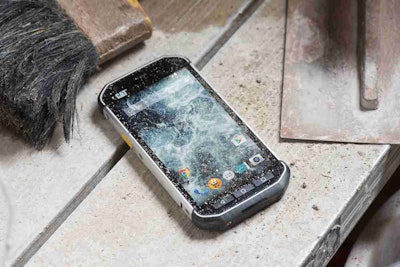
A phone that’s not a surprise to find on this list is Caterpillar’s S40. Built specifically for construction work, the S40 is Cat’s attempt to build a powerful device you don’t have to worry about destroying while on the job. Equipment World reviewed the phone in depth in October and found the device to live up to not only its drop and waterproof claims, but to also be usable with gloves on and with water on the screen. Those are huge jobsite benefits. Plus, its battery life was found to be among the best offered in an Android device.
However, performance on the phone was severely lacking. While the phone was fairly snappy when it comes to most tasks like going in and out of apps, sending emails and browsing the web, Equipment World experienced multiple slowdowns when trying to do more than one thing at a time. Plus, the benchmark test on the phone’s processor and measly 1GB of RAM placed the S40 at the very bottom of the barrel for Android devices.
Still, if ruggedness is your top priority and you can deal with a bit of sluggishness, we suggest giving the S40 a look. The price is very attractive at only $400 off contract and it’s one of the coolest-looking smartphones on the market.
No. 3-Samsung Galaxy S6
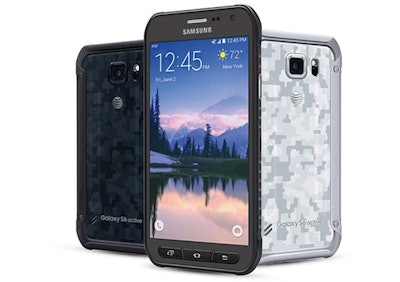
Until Caterpillar packs their phones with a bit more power, Samsung’s Galaxy S6 is the best choice for those who don’t want to deal with rugged cases in order to bring a powerful smartphone to the jobsite.
We’ll start with the device’s rugged specifications. Rated at IP68 military spec, the S6 Active is dustproof, can survive 30 minutes in up to 3 feet of water and can withstand drops from 4 feet without cracking. (This is the main area where our No. 4 pick, the Cat S40, is a better option than the S6 Active. The S40 can withstand drops up to 6 feet and can withstand up to an hour of 3-foot submersion.)
But the S6 Active packs its slightly less rugged specs into a much thinner, though much less attractive, package than the S40. And Samsung managed to cram a bigger battery in: The S6 has a 3,500 mAh battery while the S40’s is 3,000 mAh.
But where the S6 Active really blows the S40 out of the water is performance, display and camera quality. The phone features an eight-core processor and 3GB of RAM. It has a great 16MP camera compared with the S40’s rather shoddy 8MP shooter, and its 5.1-inch, 2,560×1,440 resolution display is laughably sharper than the S40’s 4.7-inch 960×540 screen.
In sum, the S6 Active compromises a bit on ruggedness, but in our eyes more than makes up for it in performance.
No. 2-Google Nexus 6P
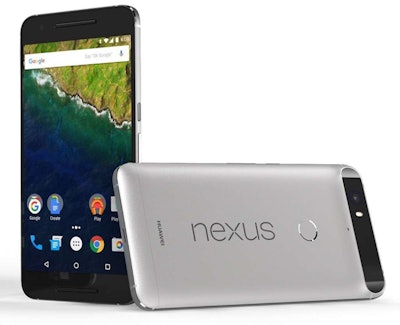
Unfortunately, the best rugged phones still have severe downsides. The S40’s Achilles’ heel is sluggishness. The S6 Active’s remains the fact that Samsung continues to ship their own skinned version of Android, which includes some poorly designed software and slows down the OS update process.
That’s why two premium (though fragile without the protection of a case) phones are our top two picks in this list. Coming in at No. 2 is Google’s latest Nexus phone, the 6P. The 6P has a 5.7-inch display with a super sharp resolution of 2,560×1,440. It’s powered by a beefy 2GHz processor with 3GB of RAM and runs the latest and greatest version of Android, 6.0 Marshmallow. And since it’s a Nexus phone, that will always be the case.
Its 12-megapixel camera is likely only second in the Android world to Samsung’s S6 phones and its battery life, though not astounding, is more than enough for a full day’s worth of work without needing a charge.
Finally, there’s the price: $499. At that price point and with all those premium specs, the 6P is the best Android phone period and a seriously hard phone to top.
No. 1-Apple iPhone 6S/6S Plus
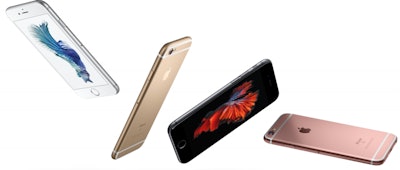
Coming in at No. 1 on our list is the iPhone 6S and 6S Plus. Although Google’s Nexus 6P is certainly a better value, Apple’s devices offer the best performance, the best app ecosystem, the best camera and the new, very useful 3D Touch feature, in a very well-designed package.
Powered by Apple’s speedy A9 processor coupled with 2GB of RAM, the iPhones 6S and 6S Plus are extremely powerful devices that have nearly eliminated slowdowns or software jitters. And though camera updates this year were minimal, the 12MP shooters on these phones offer the best image quality of any smartphone.
As far as size goes, the 6S, with its 4.7-inch display, is decidedly more pocketable and less bulky than the 6S Plus and its 5.5-inch display. But if you do a lot of reading and photography with your phone, the 6S Plus is probably the better choice with that added display size and the hardware image stabilization not found on the 6S.
Beyond a huge performance upgrade from the iPhone 6 (we’re talking at least twice as fast as those phones) the headline feature of the 6S and 6S Plus is 3D Touch, enabling the device’s touchscreen to sense how much pressure you’re applying with a touch.
The feature makes using the iPhone more efficient, allowing you to preview messages, emails, web links and much more with a light press (a “Peek” as Apple calls it) or bring that content to the full width of the display with a harder press (a “Pop”). Probably one of the more useful features enabled by 3D Touch is the ability to swipe with pressure from the left edge of the screen to enter the multitasking view. It makes going between apps and tasks a breeze.
And though none of these things will likely persuade fans of the Android ecosystem to switch, the fact remains that many developers still release their apps on iOS first.
Regardless of which phone you choose, any of the phones on this list are likely to serve you well on the jobsite.
TOMORROW: The best smartphone cases for landscape contractors.






